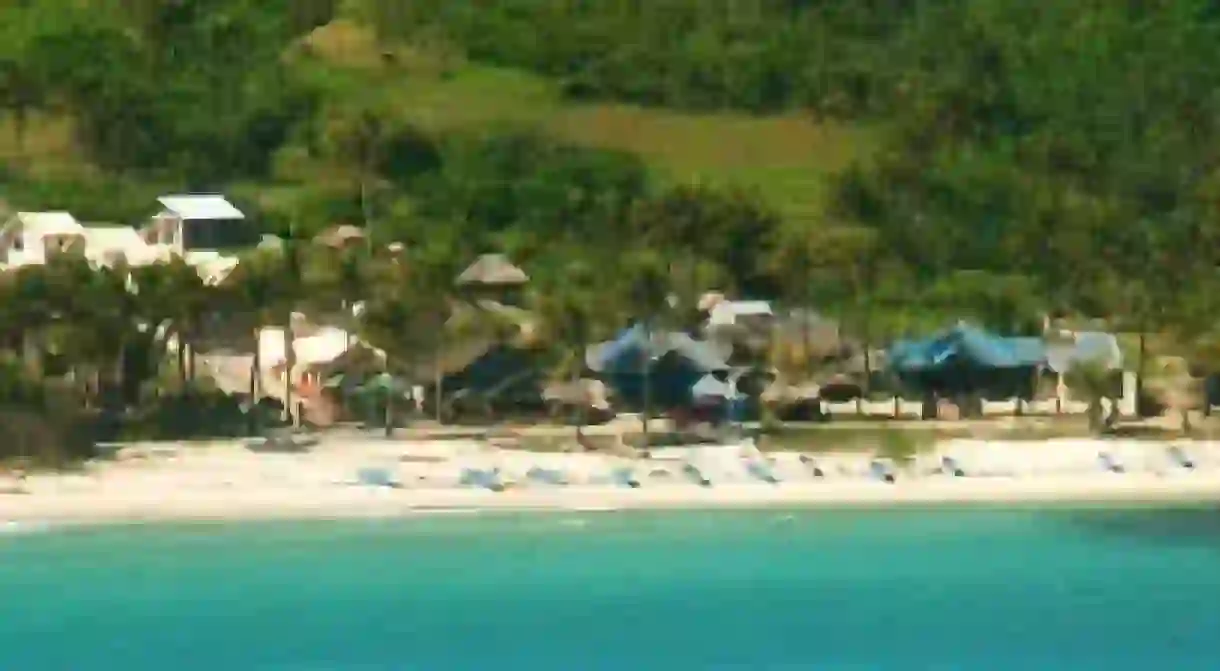Northern Exposure | 7 Essential Stops in Ilocos

With more than 7,000 islands to choose from, the Philippines never runs out of surprises for tourists. Most escape to the southern shores of Visayas and Mindanao, but there is much to be explored at the tip of Luzon. Here, Culture Trip explores the natural and man-made gems tucked away in Ilocos Norte and Ilocos Sur.
Bangui Windfarm
Once plagued by periodic power outages, the province of Ilocos Norte now enjoys reliable power thanks to the Bangui Windfarm in Burgos City. The twenty windmills produce electricity from wind energy without emitting greenhouse gases. Each has a 70-meter stem and a blade with a diameter of 82 meters. It takes about a dozen adults linked together to hug the stem. Currently, they supply 40% of the electricity in the province and projects are underway to increase their capacity.

Blue Lagoon Beach, Pagudpud
Often referred to as the ‘Boracay of the North,’ the coastal town of Pagudpud, Ilocos Norte features the same stretches of fine sand, coconut trees and cerulean waters as its more famous cousin in Aklan. However, it is nowhere near as busy as Boracay. And therein lies its charm. At the Blue Lagoon beach in particular, there is plenty of room to swim aimlessly or kayak in peace. Visitors can also watch local fishermen catching fish and lobsters. Smart tourists skip the resorts and stay with friendly locals offering home-stay programs.

The Sand Dunes of Ilocos Norte
Did you know that the Philippines has expansive sand dunes? In fact, Ilocos Norte has 52 square miles of them. At the Paoay Sand Dunes in Laoag City, hills can reach up to a height of 30 meters. Tourists can cruise down the soft slopes with sandboards. Better yet, they can rent a four-wheel drive, crank it up to full throttle and navigate the uneven sand. The feeling is akin to riding a roller coaster!

Kapurpurawan Rocks
The Kapurpurawan Rocks in Burgos, Ilocos Norte is a vast departure from the undulating sands of Laoag. Their rugged surfaces were produced over millions of years as winds and waves from the South China Sea deposited sediments on the shore and later sculpted the resulting rock. ‘Kapurpurawan’ comes from the Ilocano word puraw (white). The name describes the standout brightness of the limestone rocks, especially in broad daylight. It is best to visit just before sunrise and admire the rocks in the shifting morning light.

Kaangrian Falls
Further inland in Burgos is Kaangrian Falls. The multilayered falls is hidden in a lush forest and can only be reached by trekking for one and a half hours from the city centre. It gets its name from the Ilocano word naangri (stinky), owing to the smell of bat droppings from nearby bat caves. But with the exquisite view and soothing sounds of the cascading waters, the smell simply recedes to the background.

Vigan City
Vigan City in Ilocos Sur is hailed by UNESCO as the best preserved Spanish town in Asia. The city is replete with 16th century stone mansions, and is laid out in a Spanish grid style with bustling plazas at the centre. Interestingly, the Spanish-era homes reveal Filipino and Chinese influences as well. For example, they are well-ventilated like traditional Filipino nipa huts and have steep, tiled roofs like Chinese homes. This is because before the Spanish arrived, the city was already a vibrant trading post between China and the Philippines. The best way to explore the city is on a calesa (horse-drawn carriage), with the driver providing running commentary on the city’s history.

Churches
The provinces of Ilocos Sur and Ilocos Norte each host a UNESCO World Heritage church. These are the Santa Maria Church in Santa Maria, Ilocos Sur, and the San Agustin Church in Paoay, Ilocos Norte. Like the colonial mansions of Vigan, these churches are a mix of West and East. They follow the appearance of European Baroque churches, but their materials and design have been tweaked to withstand the local, earthquake-prone conditions. They were made using stone and baked bricks, and fortified on the sides by thick buttresses. The churches are best viewed at sunset when the warm glow softens their intimidating façades.














